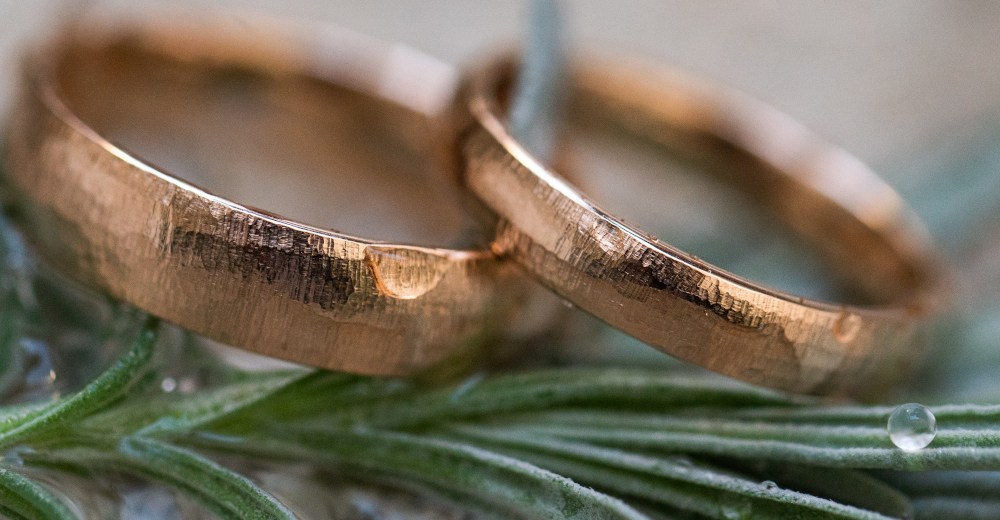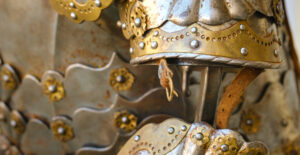
There’s a kind of gravity in a wedding ring. It’s not just a band of gold, it’s a promise, a transaction, a talisman, a curse, sometimes a ticket. In South Africa, wedding rings don’t just mark the union of two people. They travel through the country’s undercurrents of tradition, migration, grief, inheritance, betrayal, and survival. They hold more than sentimental value. They hold liquidity.
You’ll find them in velvet boxes, on trembling fingers, buried deep in safe deposit lockers, or dangling on chains under a shirt. But more often than you’d think, you’ll find them at pawn shops in Springs, roadside stalls in Giyani, and tucked into the register drawers of jewellery resellers in downtown Johannesburg. Each one has a story. Each one once carried someone’s future.
Gold has always been emotional. In the context of marriage, it’s sacred. In the context of divorce, it’s just weight. A ring that once symbolised “forever” often becomes the first thing sold when things fall apart. When rent is overdue, when school fees pile up, when a partner disappears, when a burial must be paid for, the ring is what people turn to. Not just because it’s valuable, but because it’s there. Quietly waiting. Unjudging. Liquid.
There’s a second-hand gold market in South Africa that rarely gets talked about, but it’s massive. A ring bought at Browns for R25,000 might quietly find its way to a back-alley gold buyer in Pretoria for R3,500. That same ring, melted down, becomes part of a chain sold to a tourist in Cape Town. The gold doesn’t disappear. It just shapeshifts. From commitment to necessity. From romance to resource.
For many couples, a wedding ring is the most expensive thing they’ve ever purchased. In communities where formal wealth is rare, it represents a dream, the idea that love can have a shine to it. Some families will go into debt for a ring. Others pass down heirlooms with stories built into the metal, “Your grandfather bought this with his last bonus before retrenchment.” “Your mother wore this when she left the homeland.” That weight isn’t metaphorical, it’s inherited.
And when the wearer dies, the ring doesn’t always go into the ground. In some cultures, it must be removed before burial. In others, it’s worn by the surviving spouse, or stored for the next generation. But in many cases, it’s sold. Quietly. Discreetly. With a lump in the throat and a signature on a pawn slip. Because grief doesn’t stop debit orders. Funeral costs don’t wait. And gold, no matter how sentimental, is also an asset.
 There’s an entire underground etiquette to how people sell wedding rings. Some wrap them in tissue paper and bring them to stores like they’re surrendering something sacred. Others pretend it’s “just some old ring,” as if downplaying the loss makes it less real. Buyers know better. They see it in the eyes. They weigh the story as much as the carats.
There’s an entire underground etiquette to how people sell wedding rings. Some wrap them in tissue paper and bring them to stores like they’re surrendering something sacred. Others pretend it’s “just some old ring,” as if downplaying the loss makes it less real. Buyers know better. They see it in the eyes. They weigh the story as much as the carats.
And then there are the resellers. The dealers who polish up the rings, repackage them, and sell them as “pre-loved” to a new couple, unaware of the heartbreak embedded in the metal. It’s a strange kind of recycling, one couple’s end becoming another’s beginning. The love doesn’t last. But the gold does.
In wealthier circles, wedding rings are insured, reset, repurposed. In working-class South Africa, they’re survival tools. A woman in Soweto might pawn her ring every December to cover festive season expenses, then buy it back in January with her stokvel payout. A migrant worker in Cape Town might wear a simple band but keep his real ring, the one from back home, locked away until he can send it to his wife in Lusikisiki.
And in the wake of infidelity, gold becomes a form of justice. Some burn it. Some sell it and spend the money on themselves, a bold redefinition of value. Others hold onto it, not for sentiment, but as collateral in the quiet war of separation.
The most haunting stories are the ones where rings vanish. Lost in robberies. Stolen in hijackings. Slipped down drains. Misplaced in hospital rooms. Their absence becomes a phantom weight on the finger, a reminder that even something so symbolic can disappear without ceremony.
And yet, despite all this, we keep buying them. We keep believing in them. Maybe because deep down, we understand that gold doesn’t hold the love, we do. The ring is just a vessel. A beautifully flawed, circular lie we tell ourselves that something can last forever.
But gold has its own agenda. It doesn’t rust. It doesn’t corrode. It outlasts the names carved inside it. Whether resting on a trembling hand or dropped in a melting pot, it carries forward. From love. From loss. From one story to the next. That’s the true wedding ring economy.
It’s not about price. It’s about passage. And in South Africa, no gold travels further or deeper than the kind once given with the words, “for better or worse.”



